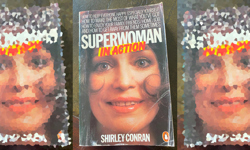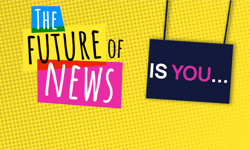I wrote my first website in the unimaginably distant past of 1995. It was a corporate site – our first – for my then employers. To give you an idea of the primitivism of our approach (perhaps it was everybody’s) we constructed the sitemap by labelling A4 sheets of paper and connecting them together on the floor of the marketing department with sticky tape and string. (Mind you, it did at least have the virtue of ensuring there were no broken links.)
When it came to the copy itself, well, I just wrote down what I would have written had I been writing copy for a corporate brochure. Or possibly one of our sales letters. But times change and although, with respect to John Caples, people don’t, it’s a fact that writing for the web is different. Or different enough to warrant a fresh look at it. In this article, I want to dig down into a few of the areas where we need to take a different approach to our copy. And let’s start with the biggie – search engine optimisation.
SEO and what to do about SEO if you’re interested in SEO
These days, search rankings are weighted far more heavily towards inbound and intra-site links than copy, but that’s no reason not to ensure our copy is working hard for its corn. Why the retreat from copy to determine relevance? I suspect it has something to do with the (relative) ease with which the unscrupulous, or even the scrupulous but irrelevant, can jack up their search rankings by writing optimised copy. It’s a lot harder to get people you don’t know to link to your site than to pay someone to write SEO-friendly copy.
Let’s begin by looking at the principles and then move on to the practice. SEO copy needs to include keywords, or these days key phrases. These are the search terms your prospective visitors are typing into Google. (I could start saying “…and the other search engines” but that will quickly become tedious for both of us.) To take an example, if you publish a magazine that covers wine collecting, “fine wines”, “wine magazine”, and “wine collecting” might work as keywords. But then so might “premier cru Bordeaux”, “fine wine collecting”, “investing in wine” and “advice on wine storage”. There are plenty of online tools to help you identify the right keywords for your site, so let’s just assume you’ve picked the second group above.
You want to use your keywords as early as possible in your body copy. Google assigns greater priority to pages that use keywords early, so waiting 100 words before mentioning them is unhelpful to your rankings. Our opening lines might, then, read something like this:
Do you collect premier cru Bordeaux? Are you thinking of investing in wine? Do you need advice on wine storage? At Corkscrew we share your passion for fine wines.
Collecting fine wines isn’t for the faint hearted – or the dull-palated – so we offer you advice on the best fine wines to collect. From tasting notes on the best premier cru Bordeaux to buy now to interviews with fine wine collectors.
The key to successful SEO copywriting is to use your keywords intelligently. Mindless repetition (which I have seen suggested quite seriously by a specialist SEO consultancy) will only earn you a spammer label from Google and a ranking plummeting into the high teens where you find those sites whose text isn’t even supported by your browser. Using variants is OK and it’s best to focus on just a few keywords per page, rather than trying to jam your entire list of keywords into every single page of your site.
One of the most useful – and pithiest – pieces of advice I have ever read on SEO copywriting runs like this: “Prefer the specific to the general, the concrete to the abstract, the definite to the vague.” So, “French wine” would be better than “wine”; and “premier cru Bordeaux” would be better than either. Incidentally, the advice is contained in that online copywriting classic, The Elements of Style, originally published in 1915. Nothing new under the sun after all.
Let’s play tag
A few years ago, the big deal was meta tags. Now they seem to be fading in importance, left sitting around in moth-eaten finery like Miss Havisham, waiting for their big day. But, again, they are there, on every web page, and they do have a useful role to play both in SEO copywriting and in attracting visitors once your results are displayed.
The title tag is probably the most important. It’s reproduced by Google as the first line of your search result – the blue underlined text. And it is counted for relevance – and therefore results rankings. For our fictitious friends at Corkscrew, the title tag might say:
Corkscrew: the monthly fine wine collecting magazine
The description tag is not used to calculate your results ranking, but it does appear beneath your title tag in the search results, so it gives your visitor a better idea of what you’re all about and whether they should click through to your site. Maybe this would work:
Premier cru Bordeaux, dessert wines, rarities and spectacular new finds: if you collect fine wine join us at Corkscrew.
Finally your keywords tag. Here is where you announce to Google just which words and phrases you are optimising for. Or, in other words, what your page is about. Since Google only wants to send visitors to your page if it matches what they’re looking for, your keywords are critical in determining relevance. Now you could pick keywords lots of people are looking for, “online poker” for example. But unless your page is actually about online poker, Google will get all huffy. That’s why it relies so heavily on the presence (or absence) of inbound links. If your page is linked to from online poker sites, gambling magazine sites or blogs about poker playing on the web, then it will be happy to accept your page for what it says it is.
To get usability right click here
Usability is the term of art for what used to be known as user-friendliness. That in itself translates pretty much exactly as easy to use. And you know the problem with “ility” words. They’re a bit like “ologies” – you can charge more for helping people understand what they mean.
On the web, usability refers to a bunch of related aspects of web page design: how easy it is to find and click links; whether users need to scroll or click to continue reading; whether users can read text easily; whether your site is coded according to a set of widely accepted conventions (for example, labelling all page heads with the [H1] tag).
This is more an issue for your designer than your copywriter, but we should all be aware of the issues since they affect comprehension, and therefore action, hugely. Make sure your copy is:
* Legible. For colours, dark text on a light ground works best (just as it does in print). Do not use mid grey type on a pale grey ground (I have seen a site using this colour combination this year). Or all white text on a black ground (I’ve seen this too). And keep your point size large enough that visitors can read it easily from a distance of around 30-45 cm. Yes, you can tweak your page settings using your browser’s tools but be honest, how many of your users do you think are doing that?
* Readable. A cognitive rather than physiological challenge this one. Readability is the ease with which your reader can understand your copy, assuming they can see it. You can check the readability of your copy using the readability statistics embedded in Word. Look for the Flesch Reading Ease Score and aim for 50 if you are a B2B site and 60 if you are a B2C site.
* Usable. If you are using hypertext, make sure you give your reader a decent target to aim for. Our friends at Corkscrew might do it like this:
Download our FREE Premier Cru Bordeaux Price Calculator here.
And not like this:
Download our FREE Premier Cru Bordeaux Price Calculator here.
Research points to web users being more comfortable with scrolling than clicking as a method of finding more information. Probably because of the prevalence of the scroll-wheel mouse. So don’t assume you need to break up long pages into separate pages. Designers often want you to do this because they like designs that fit neatly onto a single screen.
Ditch the arachnophobia
Some 14 years after I wrote that first website, the world of copywriting is a very different place. You can buy books telling you how to write copy for the web, sign up for SEO e-zines and listen in on digital copywriting webinars. But when they tell you that a page head is not only a good idea but that it should focus on something of interest to the visitor well, you have to wonder who’s laughing loudest. You, them, your visitors, or David Ogilvy, spinning in his grave and wondering when all this became rocket science.
Yes, we have to get SEO right or searchers won’t find us. But consider this: once a searcher clicks on your site they turn into a prospect. So your copy needs to engage them with as much power as it did in pre-web days. That means doing something rather old fashioned. Forgetting about technology and figuring out what you could say that might persuade someone to buy from you.










